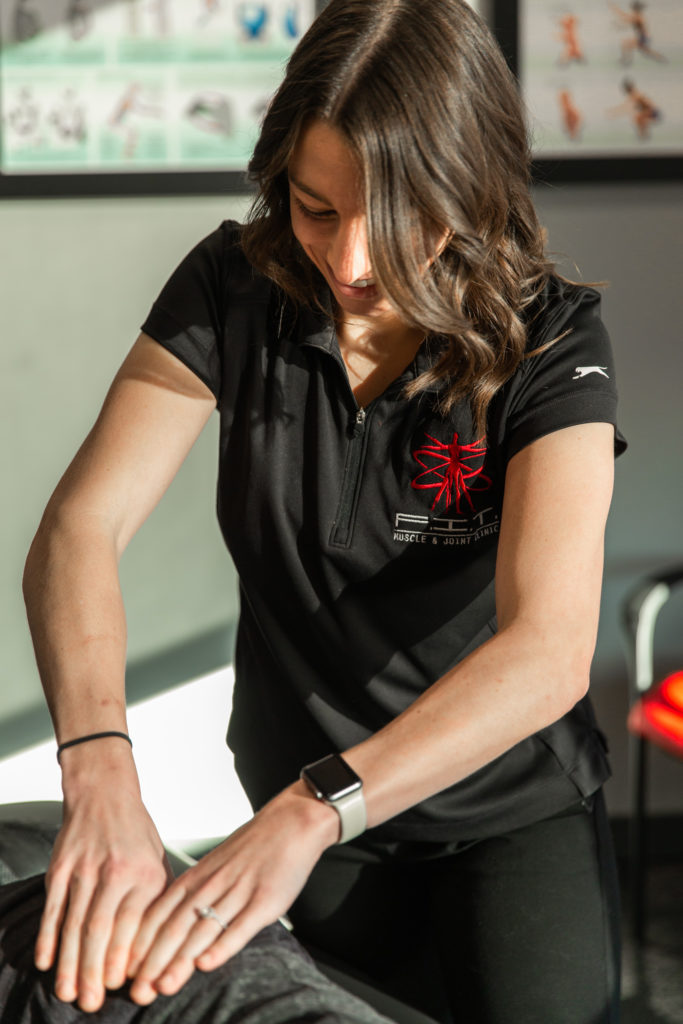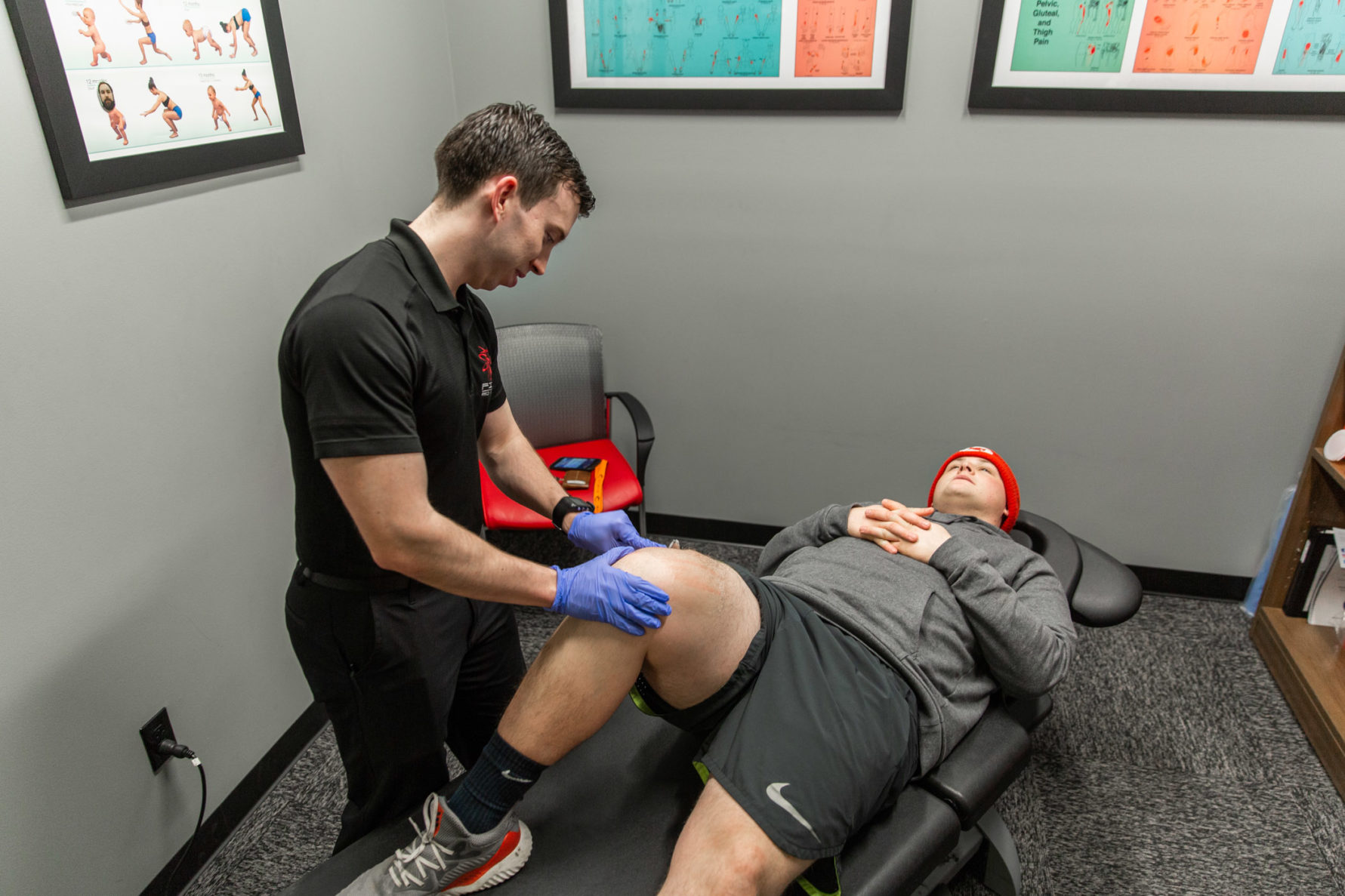
The terms “bulging disc” and “Herniated disc” are commonly thrown around when it comes to spinal pain. But what exactly do they mean? Are they different? And if so, how? At F.I.T. Muscle & Joint Clinic, our chiropractors are highly qualified and have helped hundreds of patients across town find expert, successful treatment for herniated disc in Kansas City. Below, we will answer all of your questions about herniated discs, including potential complications of each.
What is a disc?

To begin this discussion, it’s best to know the structure of a disc. On the inside, discs have a jelly-like material called the nucleus pulposus. The outside of the disc, surrounding the nucleus, are several layers of diagonally oriented fibers called the annulus fibrosus. These annular fibers are what contain the nucleus material on the inside of the disc.
Simply put, a “disc bulge” is when the jelly-like material is still contained within the fibrous layers. A “disc herniation” is when the fibrous layer ruptures and the jelly-like material escapes from its containment.
However, there are several levels of progression an injured disc can assume. Read on to learn more about the progressions of an injured disc. (See image below.)
Protrusion
A disc bulge can also be called a protrusion. This is when the disc’s nucleus bulges outward but is still contained within the annulus fibers. No rupture occurs with a protrusion.
Prolapse
A disc prolapse is still contained within the annulus, but some of the inner fibers have been torn. So during a prolapse, the outermost annulus fibers are holding on for dear life, so to speak, to keep the nucleus material contained. A prolapse can also be classified as a bulge.
Extrusion
A disc extrusion is when some of the jelly like nucleus is able to escape past the annulus fibers through an opening due to tearing. However the escaped nucleus is still attached to the rest of the disc. An extrusion can classify as a herniation.
Sequestered disc
A sequestered disc is what happens when fragments from a disc’s nucleus (and maybe even annulus) make it outside the realm of the disc and become detached from the disc altogether. We can also classify this as a herniation and is the most severe.
How will I know if I have a herniated disc?

So how do you know if you have a disc bulge or herniation, and what will happen if you do?
You may have a disc bulge or herniation if you have pain in the lower back or neck that gets worse with bending forward to touch your toes, picking something up off the ground, sitting, or looking down. These things can all cause our low back and neck to bend forward, or flex, which aggravates most bulges/herniations.
You may also experience worsening of pain with coughing or sneezing. Another classic sign of a disc bulge or herniation is pain that spreads down into the butt region and leg, or the shoulder and arm.
It can be difficult to classify someone as having a disc bulge or disc herniation without an MRI, as both can have similar presentations. The good news is, the treatment for both is also similar, so an MRI is not needed before treatment in most cases.

Generally speaking, herniations have more severe symptoms then bulges. In more severe disc injuries, the complications can include numbness, tingling, and weakness in the extremities. The most significant complication is when the disc in the low back interferes enough with certain nerves that it can lead to a loss of bowel or bladder control and/or numbness on the inside of the thighs (saddle paresthesia). This is rare and usually only occurs with sequestered discs. If you experience either of these last two symptoms, a trip to the ER is needed immediately.
Treatment for herniated disc in Kansas City

For conservative treatment for herniated disc in Kansas City, your healthcare provider may take you through a series of repetitive motions that can help migrate the disc back to its proper position, or put you on a special table that can be used to decompress the disc.
Other soft tissue treatments such as dry needling, massage, and stretching may be used to help relax the muscles of the surrounding area. Along with treating the disc and its surrounding muscles, a good treatment program will also include some ways to improve core or neck stability, which will help prevent future disc injuries.
Surgery is not usually needed, as conservative treatment is effective in most cases. However, surgery may be considered if more severe symptoms occur, or if symptoms continue after a trial of care. If you think you might have a disc bulge or herniation, the best thing to do is to visit your healthcare provider so they can take you through an exam and decide the proper treatment options for you.
Learn more from the experts at F.I.T. Muscle & Joint Clinic
If you have any additional questions about treatment for herniated disc in Kansas City, feel free to contact our team anytime and we’ll be happy to help in any way we can.



